Tempo Move review: the smart gym hub that turns your TV into a virtual trainer
This powerful, portable smart gym is far more affordable than its big brother, the Tempo Studio

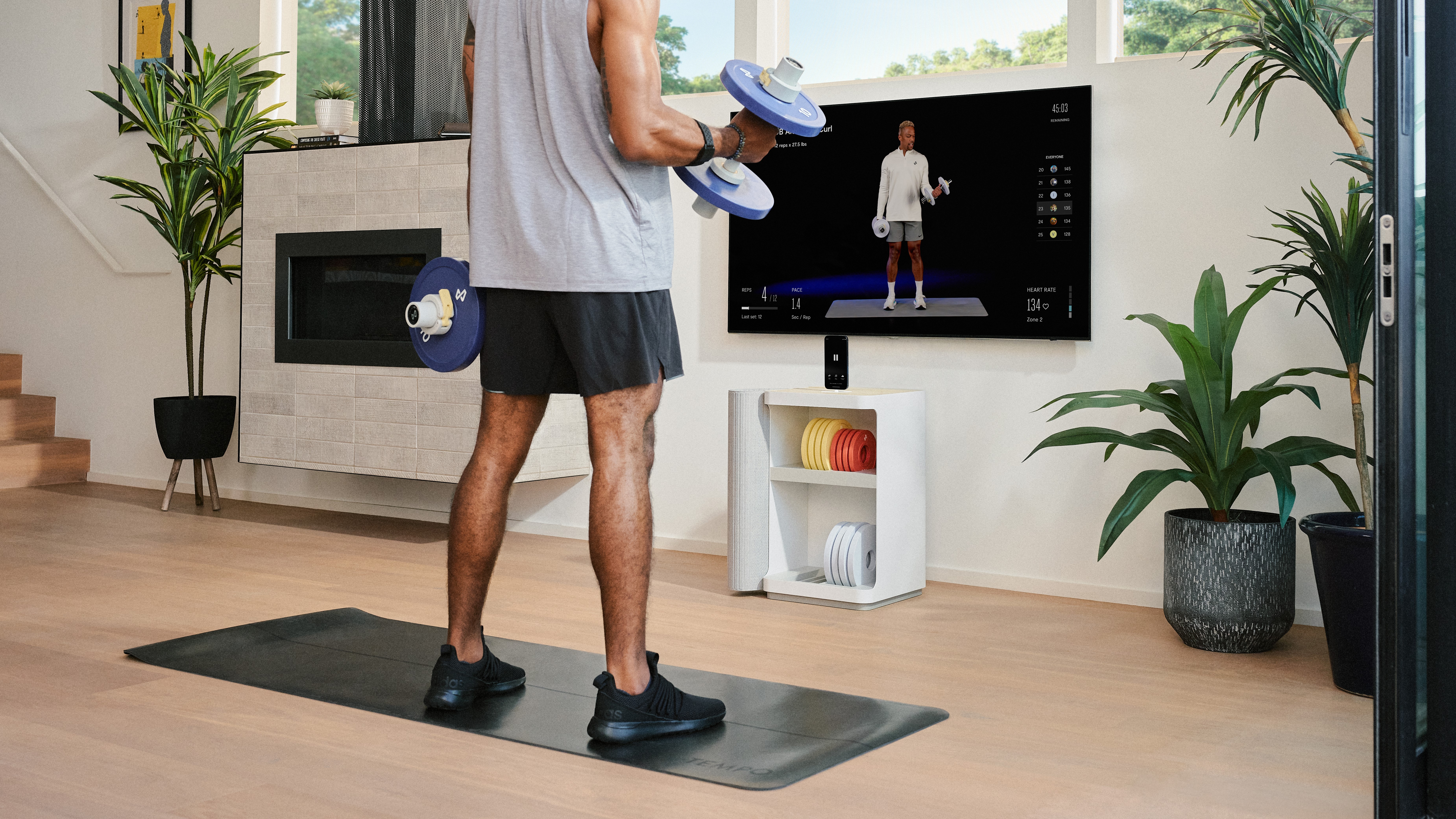
While the larger-than-life Tempo Studio tower offers a comprehensive – and undeniably high-end – solution to virtual personal training, the diminutive Tempo Move is more than just fancy fitness furniture from the future. Whether you’re a seasoned athlete or a novice calorie-cruncher, the Tempo Move is a potentially powerful tool for your home gym.
-
+
Weights included
-
+
Cleverly compact design
-
+
iPhone camera tracks your form via 3D Tempo Vision
-
+
Detailed instruction from professional trainers
-
-
Monthly membership and annual commitment
-
-
Motion-sensing needs ~36 square feet of space
-
-
Less robust platform than iFit (but not by much)
-
-
No Android phone compatibility
Why you can trust T3
Smart gyms keep getting smarter, and the cleverly compact Tempo Move has recently entered the increasingly competitive arena of virtual personal training.
In a side-by-side comparison, you’d barely know it was related to the much-bulkier Tempo Studio, an all-in-one fitness platform featuring a beautiful 42-inch touchscreen to access the company’s expansive library of live and on-demand classes. They both join the ranks of Fiture, Kemtai, Peloton and others in the overlapping sub-sectors of futuristic fitness tech.
Just like the Studio, the Tempo Move uses 3D Tempo Vision tech to track body movements and offer real-time guidance for each workout, utilizing your iPhone’s front-facing camera to create a precise 3D map of the surrounding environment. The Move is far more portable than the chic-yet-heavy Studio, and far easier on your wallet, too.
When the Tempo Studio was first released back in 2020, smartphone hardware hadn’t quite caught up with the company’s vision. But thanks to the latest iPhone upgrades, Tempo managed to unlock brand-new potential in its platform – at a fraction of the price. The Tempo Move is a direct competitor to the petite Peloton Guide (not to mention pricier multi-gym setups), but is it worth the extra spend?
Read on to determine if it belongs in your home gym, and see how it stacks up against the competition. You can also learn more about how we test at T3.
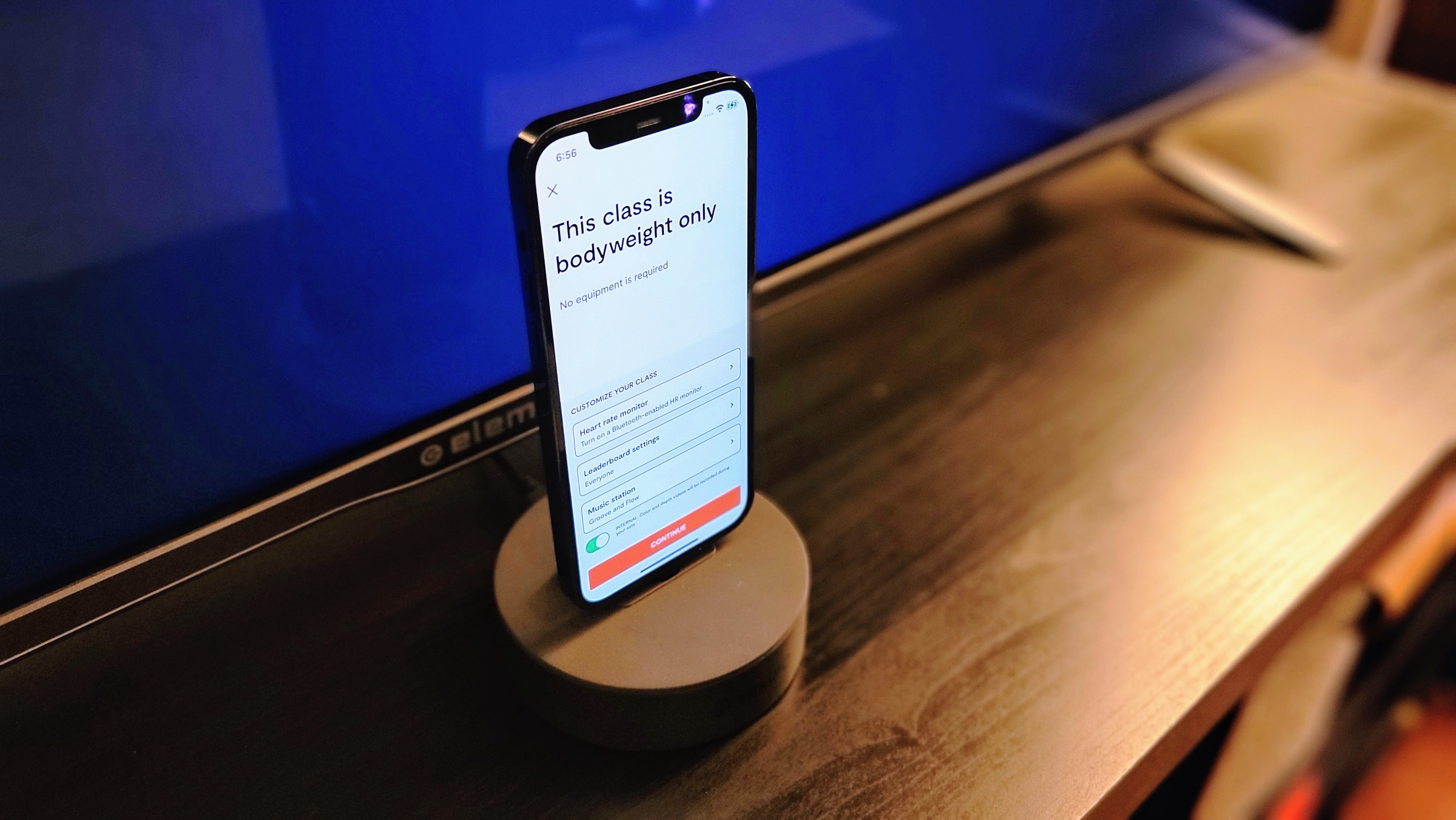
The Tempo Move offers a range of fitness classes, including strength training, mobility, recovery and HIIT workouts via the iPhone app.
Tempo Move review: price and availability
First things first: The Tempo Move is available on Tempo’s website for $495, and there are two color choices: “light” or “dark.” Whether you go with the white chassis and pine-colored surface or gunmetal gray chassis and chestnut-colored surface, either option looks super slick from top to bottom.
Like the Tempo Studio which costs $2,495 (plus $250 for shipping) the Move includes two 7.5-pound dumbbells, four weight collars, and a range of weight plates (totalling 35lbs) in a storage cabinet.
Get all the latest news, reviews, deals and buying guides on gorgeous tech, home and active products from the T3 experts
All Tempo units require an annual membership ($39 per month with a 12-month commitment). But since the Move doubles as functional furniture, it’s still useful even if you let that membership expire – which sort of defeats the purpose of virtual personal training, but whatever. iFit charges the same, which is on par with most annual gym passes.
Overhauling your weightlifting routine is an investment, no matter how you slice it. But since home fitness instantly saves time driving to a workout, it’s absolutely possible for smart training like the Tempo Move to supplement – or even replace – your old gym membership, especially if you already work from home. Time is money, as they say.
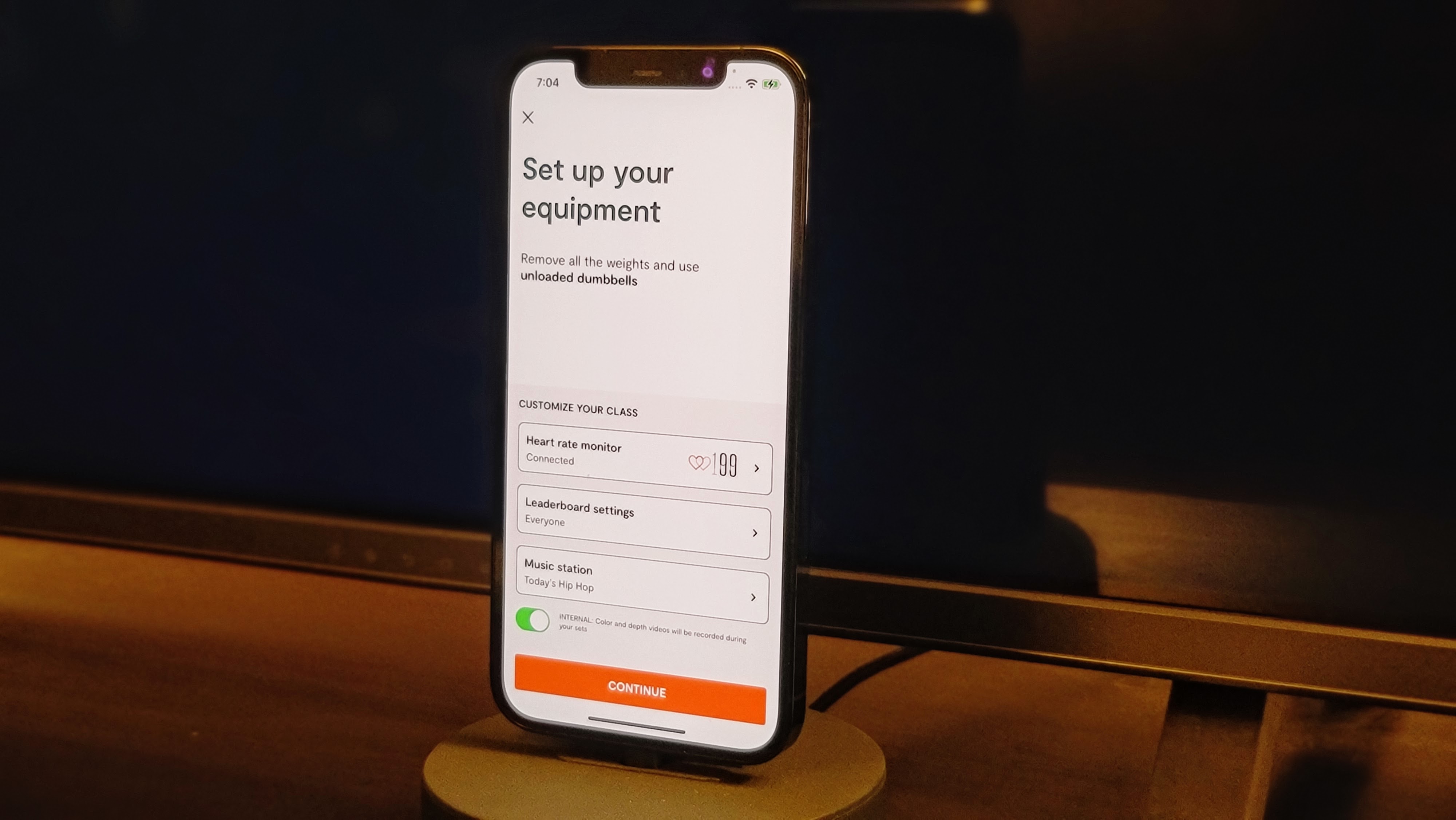
The Tempo Move is an iPhone-only device that relies on Apple’s True Depth sensor for motion tracking.
Tempo Move review: setup
While the beastly Tempo Studio took two delivery guys to install, the Tempo Move comes in a much more compact (read: chic) design that I could put together myself. I love the understated chestnut accents, and with everything stowed inside, you’d never know the Move wasn’t just part of my living room set.
If you’re a diehard Android user like myself, you may as well stop reading now, unfortunately. The Tempo Move is an iPhone-only device (XS/XR or higher) that relies on Apple’s True Depth sensor for motion tracking. Tempo recommends using a space that’s about 6 x 6 feet between you and the Tempo Core, which can sit on the cabinet or closer to your TV screen – whichever provides the clearest line of sight for the webcam.
It only took me a few minutes to download the Tempo app, activate my account, and set up a customized fitness profile. Next, it was time to create a personalized workout plan based on my weight training experience, current fitness goals, the equipment Tempo sent me and my preferred workout days. Then I just had to connect the Tempo Core module to my smart TV via HDMI + USB port, dock my loaner iPhone to the Core and get ready to rock.
I know it sounds complicated, but the whole process was more intuitive than expected.

The Tempo Move cabinet is a compact 22 x 13.5 x 13.5 inches.
Tempo Move review: design
The terms “smart gym” and “smart mirror” are both relatively new to the broader fitness industry, with the Tempo Move falling into the first category.
The main apparatus is a small-but-mighty storage cabinet that includes the Tempo Core, an HDMI cable, four weight collars, two 7.5-pound dumbbells, four 1.25-pound smart weight plates, four 2.5-pound plates and four 5-pound plates. A hinged panel flips up in the back to hide the unweighted dumbbells, and the main cabinet is covered by a discreet magnetic flap.
Akin to the iFit app, the Move Core module hooks up to compatible smart TVs via HDMI port to connect you with Tempo’s library of on-demand workouts on the big screen – once your iPhone is plugged in, of course. (Kemtai takes a similar approach via laptop, tablet or smartphone.)
Whereas the markedly more expensive Tempo Studio tower has a taller, larger footprint at 72 x 26 x 16 inches, the Tempo Move cabinet is far more compact at 22 x 13.5 x 13.5 inches. It made a fine addition to my other living room furniture, and with the front cover closed, you’d never even know this was a fitness tool at first glance. In stark contrast, the Studio weighs 100 pounds by itself, and it’s more than 200 pounds with everything stored inside.
What sets the Tempo Move apart from other smart gyms? Enter 3D Tempo Vision, which uses your iPhone to analyze muscle movements and makes in-the-moment suggestions to improve your form as you go.
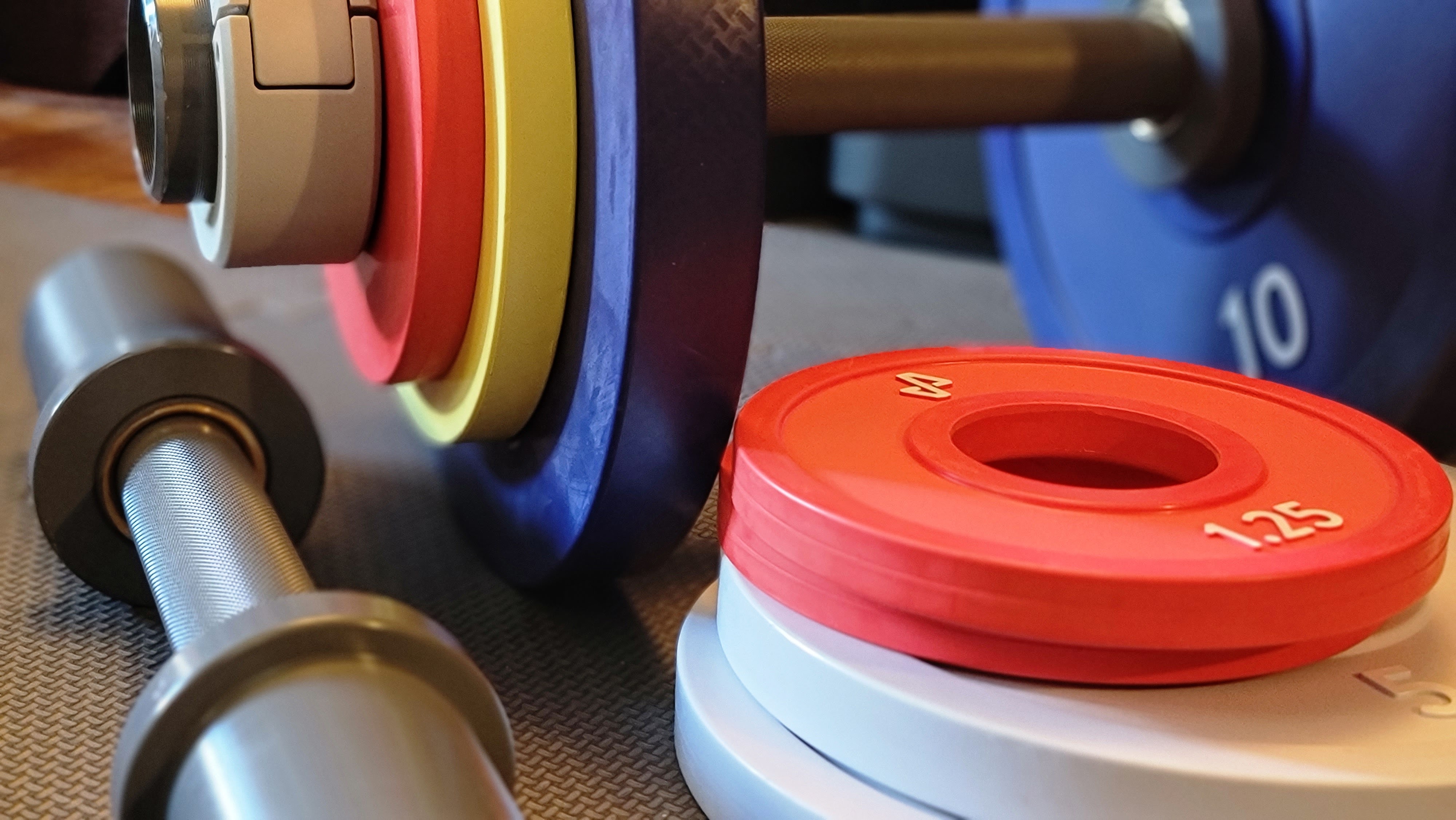
The Tempo Move comes with several dumbbells and weight plates.
The Tempo Core is a discrete hockey puck-like disk that sits on top of the cabinet and docks to your iPhone after connecting to your TV or tablet via HDMI/USB-A. You have to stand directly in front of the Studio tower for its built-in sensors to work, but you can reposition the Core module wherever works best. I perched mine on the TV stand for most of my testing, slightly off-center of the television.
There’s a small compartment in the back of the cabinet to store the dumbbell bars, and a mesh magnetic cover to hide the weight plates inside, which are conveniently stacked in their own individual slots. The top can also be removed for additional weight, resistance band and cable storage. In short, this minimalistic bad boy is perfect for apartment dwellers like myself.
While the NordicTrack Vault includes dedicated pairs of dumbbells for each and every weight (between 5 and 30 pounds, in increments of five), Tempo opted for removable plates that can be swapped out as necessary on the 7.5-pound dumbbell bars. This creates a more gym-like experience for those used to plated workouts, plus superior customization in terms of swapping out weights, since Tempo includes 1.25-pound and 2.5-pound plates.
The premium California Dumbbell bars felt great in hand, with comfortable metal knurls to grip. Tempo’s colorful plates are also coated with a soft, rubber-like material that’s easier on the fingers – and your floor – than traditional all-metal plates.
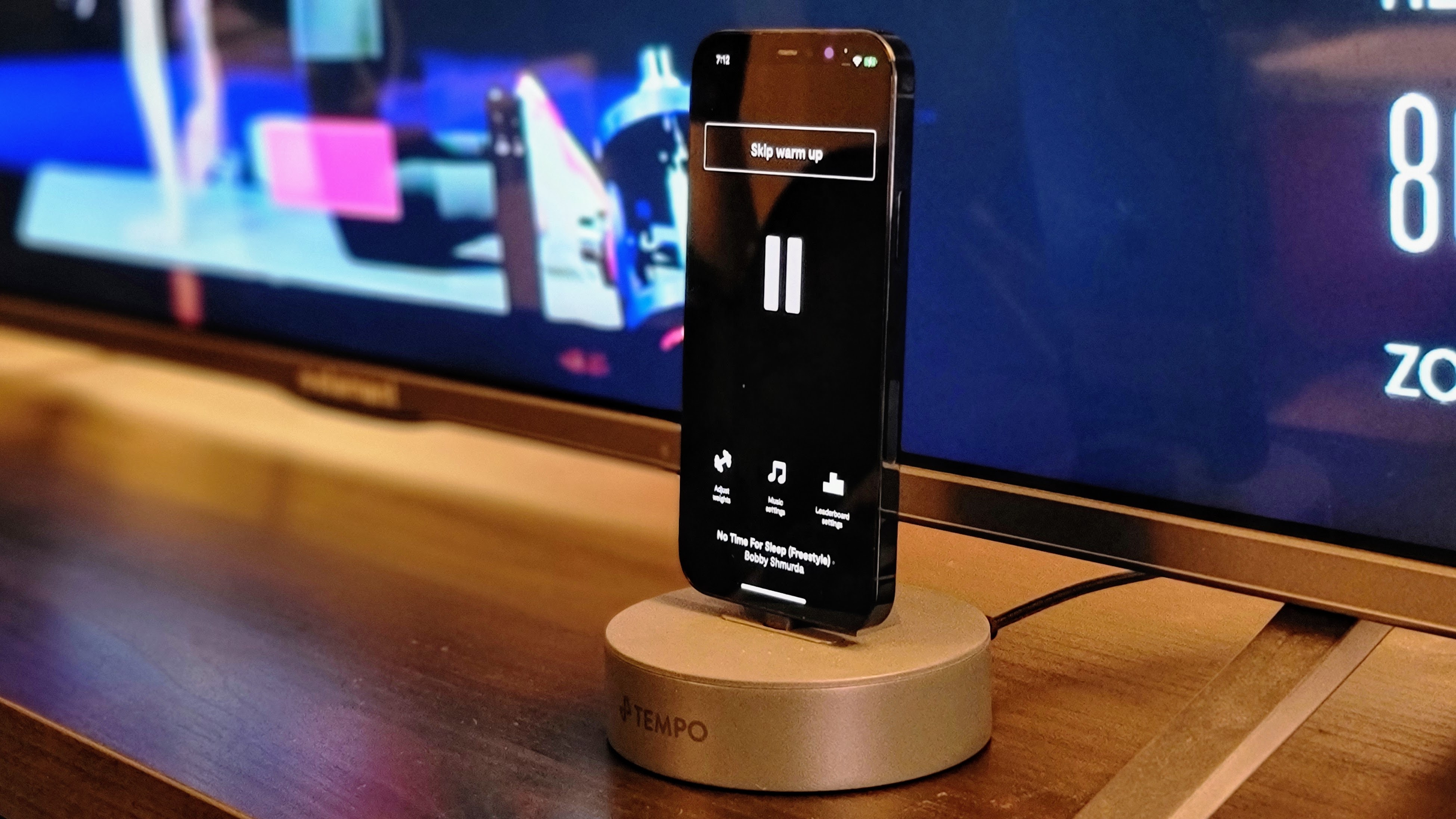
The Tempo Move has more than 1,000 classes to choose from.
Tempo Move review: performance
The meat of Tempo’s platform, of course, has nothing to do with the snazzy equipment they sent me, and everything to do with their team of certified coaches, each of whom has their own flavor of personal training. Tempo offers a range of fitness classes, including strength training, mobility, recovery and HIIT workouts via the iPhone app.
In addition to both pre-recorded and live classes, you can join specific programs to help improve muscle definition, lose weight and positively impact your overall health. The classes available are partially dependent on the equipment you have on hand. In my testing, I easily counted more than 250, but at this point there are more than 1,000 classes to choose from, with brand-new ones being added every week.
Within the Tempo app, there are a few main tabs to navigate between:
1. Home: This is where you keep track of weekly class schedules, select the next workout of a given program you’re enrolled in and scroll through other class recommendations from Tempo that’ll get your blood pumping.
2. Classes: From here, you can filter classes by workout type, duration, difficulty level, muscle group and trainer. There are currently 10 coaches in total, and they each bring their own unique energy to the app. You can view recently added classes or scroll down to browse by category (for example, Strength Training for Runners, Core and More, Celebrate Women in Strength). This is perhaps the most important part of the UI, and Tempo absolutely delivers in terms of both usability and accessibility.
3. Live: This tab was not yet active during my testing, but Tempo has recently added live classes to the platform, instantly increasing the value of that monthly membership.
4. Programs: From here, you can browse through a bunch of ever-changing workouts. For example, the Tempo Winter Games program consisted of six classes led by Beijing-bound Olympic athletes Mark McMorris, Maame Biney and Mike Schultz. The class offerings don’t feel quite as robust as iFit – at the time of writing, iFit has more than 30 trainers in its roster instead of 10 – but since they’re always changing, it’s hard to make direct comparisons here.
The Profile area shows you how many workouts you’ve done, the calories you’ve burned and the total volume of weight you’ve lifted. (You can view workouts from the past 7 days, 30 days, or all time.) The gear icon lets you adjust notification settings, change your password, invite up to five family members to your Tempo membership and manage other preferences.
To give the Tempo Move a fair shake, I completed a few different yoga classes and strength-training workouts with Jeremy Falk, Melissa Boyd and Clarence Hairston. I have to say, Tempo’s trainers really make things easy with their onscreen instruction. They’re friendly, knowledgeable and pleasantly conversational, guiding you through every meticulous movement and emphasizing proper form and technique along the way. There are plenty of in-workout music options, too, thanks to that conspicuous Apple partnership.
At the beginning of each class, the program tells you what equipment you’ll be using, along with what weights to load up on the dumbbells. As each workout progresses, you can pause to adjust weight plates, as necessary.
From my 55-inch TV screen, it almost felt like I was in the same room with my coaches, resulting in surprisingly personal solo workouts. A red rectangle appeared at the bottom of the screen whenever I moved out of range from the iPhone’s camera. (The rectangle turns green when you’re standing in the right place.)
The main technology on display here is 3D Tempo Vision, which utilizes artificial intelligence – along with Apple’s True Depth tech – to analyze your movements and track reps as you work out. Unlike the Tempo Studio, which already has this hardware baked into the tower, the Move offloads the necessary tech to your iPhone camera’s True Depth sensor. As you complete each workout, individual exercise names are displayed in the upper-left corner of the screen, with your reps, pace and heart rate tracked on the bottom left.
During testing, the Move tracked my, well, movements with high accuracy as I completed each rep, and it certainly gamified my workout a bit to check in with the leaderboards as I went. (You can hide the leaderboard if you prefer, though.)
Note: Not every workout offers real-time feedback and form correction, which makes sense since not every workout lends itself to this feature.
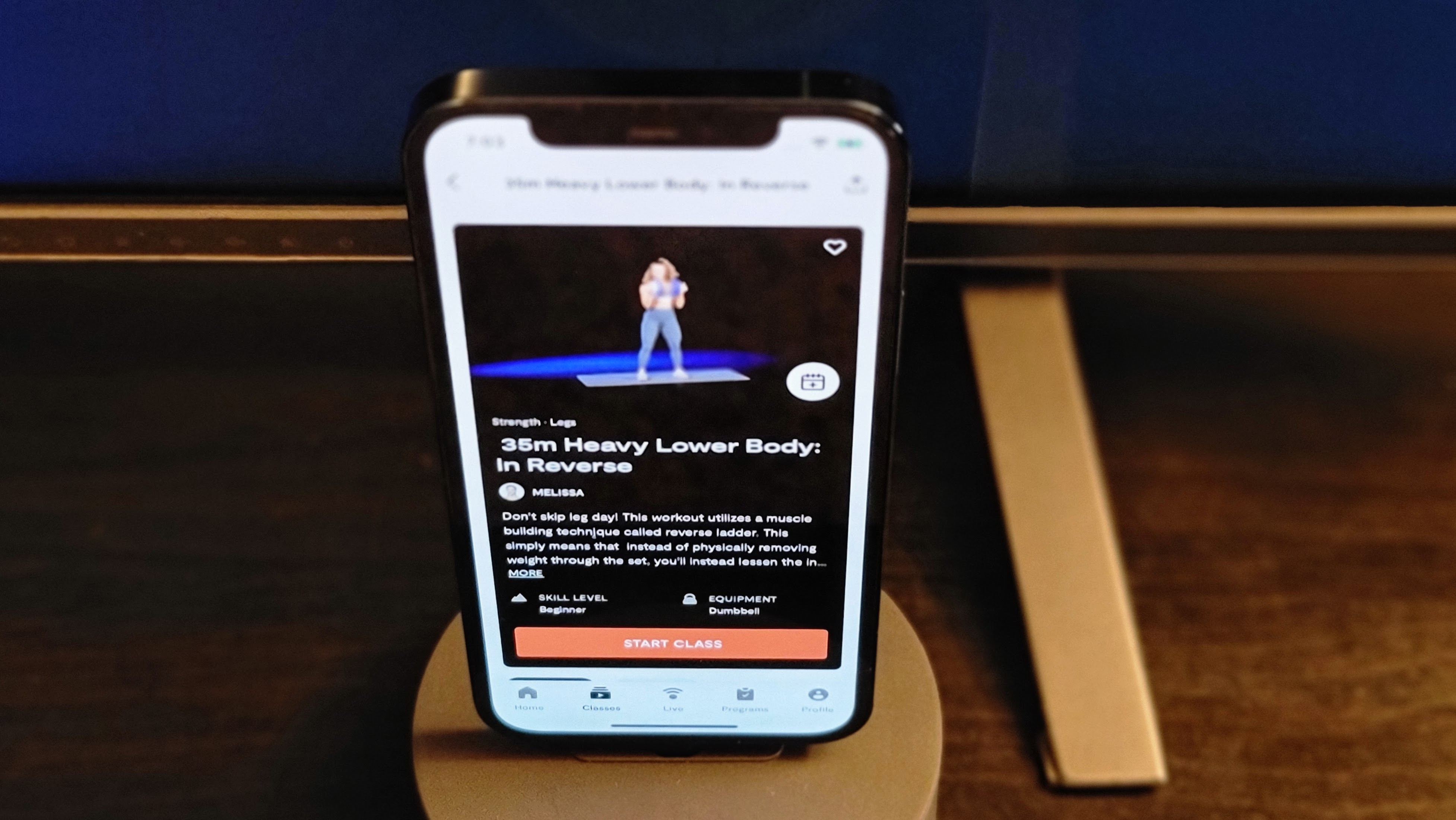
At the beginning of each class, the Tempo Move program tells you what equipment you’ll be using.
Tempo Move review: verdict
Most smart gyms are already smarter than I am, and the Tempo Move represents an excellent value in comparison to the competition. It’s much more compact than its older sibling, the Tempo Studio, and just as capable for those with modest-to-moderate fitness needs. If you’re an iPhone user looking for some extra spice in your life, the Move is certainly worth its weight in sweat.
For around the same price, the new Peloton Guide seems to share similar attributes, specs, and capabilities as the Move (I’ve yet to test it myself). But for less than $500, I’d say either smart gym is worth the investment, no matter how hard-core – or casual – your fitness routine may be. From stretching to strength training, there really does appear to be something for everyone, and the trainers are top-notch.
Everyone has a different fitness journey, but anyone working out from home will find something to like about Tempo’s comprehensive library of live and prerecorded classes – and no gym commute, to boot! Long-story-short: the Tempo Move provides an excellent baseline of tools to optimize your body and mind from the inside out, one workout at a time. The future of fitness is now, folks.
Tempo Move review: also consider
Of course, the Tempo Move isn’t the only smart gym on the market today. The $1,495 Mirror is another wall-mounted option, but you won’t get any weights bundled in. The $1,999 NordicTrack Vault combines the sleekness of the Mirror with comparable weight accessories as the Tempo Studio, and its $39-per-month iFit class offerings are equally comprehensive. The Vault’s value also increases if you own other iFit-enabled equipment, such as a treadmill or stationary bike.
If your abode meets the proper installation requirements, the Tonal smart gym costs $2,995, plus an extra $495 for the accessory package (with smart handles, smart bar, rope, bench, roller and workout mat). Not to mention $250 for installation and a $49 monthly membership.
All of these smart gyms require a monthly subscription, but if you’re already willing to shell out that kind of coin, the Tempo Move is the best value overall. It’s a premium product that’s also actually somewhat portable. That being said, the NordicTrack Vault has a full-length mirror built right into the weight storage cabinet, and might be better for experienced weightlifters. (But not bodybuilders. Smart gyms are not built for powerlifting – yet.)
If money is tight, Kemtai ($40 per month) is a laptop-based fitness app that uses your device's webcam to track 44 different data points on your body – no extra equipment required.

As a freelance journalist, TJ has over a decade of multi-medium storytelling under his belt. Leveraging a quarter century of collective coddiwompling amid the ever-evolving landscape of wireless gadgetry, his unique editorial background allows him to explore a variety of tech-centric subsectors on this fascinating planet. When he's not field testing new gear in the Catskills, Adirondacks, or an actual field, he can be found sipping Negronis in his living room and crafting Dr. Seussian poetry inside a tattered moleskin.
